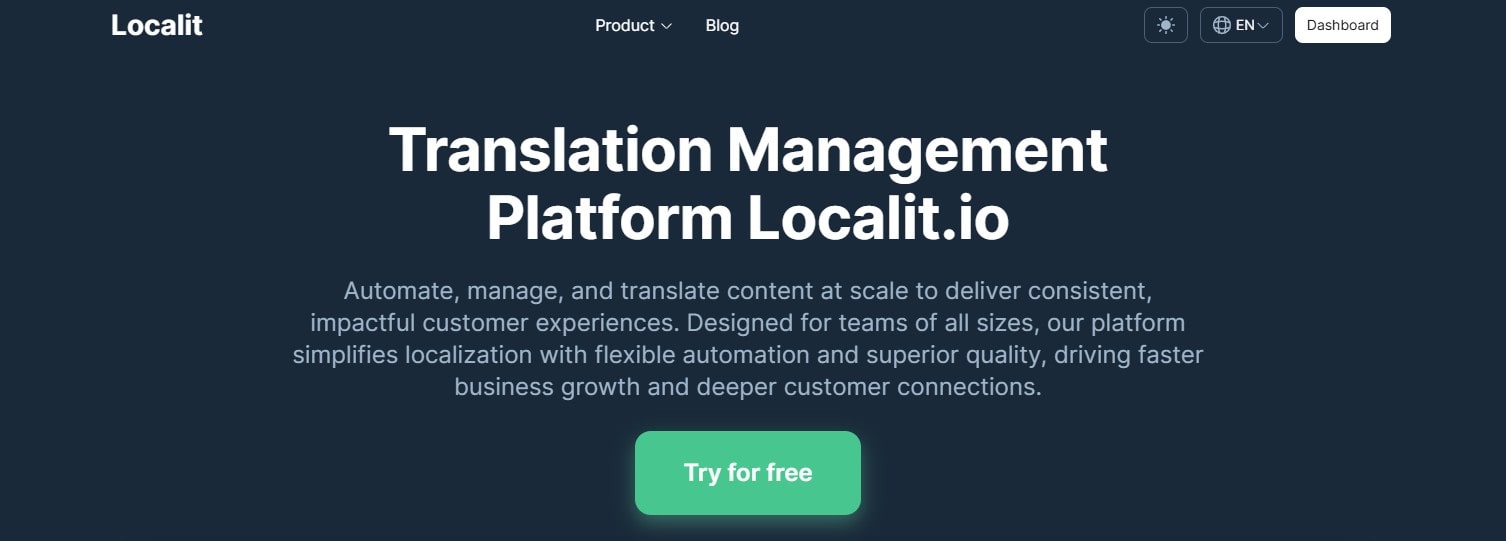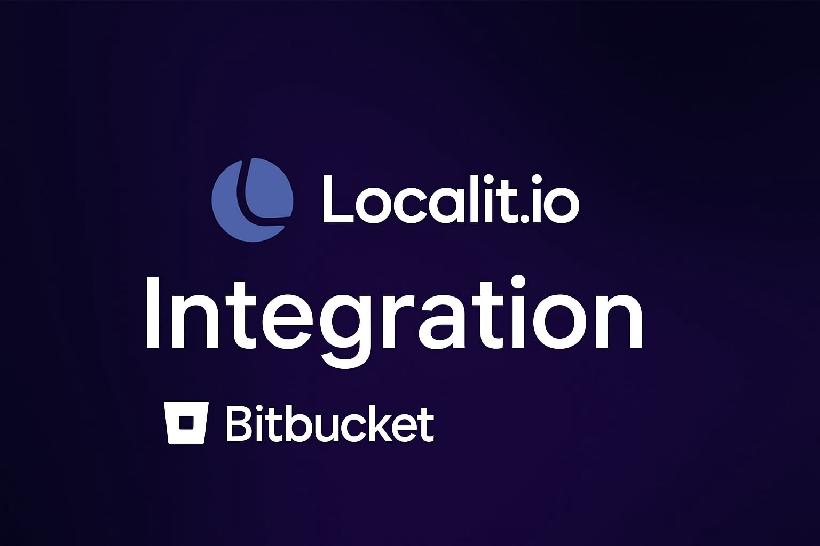The future is here: everything is done online nowadays. Globalization, fast Internet connection and high penetration rates are to thank for this. Now it is easier than ever to get connected with people all over the world, especially for businesses looking to expand internationally.
A huge stumbling block on this path? Localizing your website, the facade of your business, the thing that customers often pay the most attention to. User-friendly and well-organized sites bring in better engagement and conversion rates, while also establishing your online presence. It's the equivalent of declaring "I'm here, and you're gonna love me!" to your audience. Wherever they may be. So, in order to achieve success with your website on the international stage you need to make sure the language it is in meets the local expectations, while also respecting cultural norms and traditions. Want to learn more? Keep reading to discover all you need to know about top website localization issues and how to avoid them.
What Is Website Localization?
Essentially, website localization is the process of introducing yourself to a new audience in a target market in a language they understand while making sure that no clunky sounding or awkward looking mistakes seep through. Website localization has three main stages:
Translation — machine or human, translation is an important step towards achieving your goal. Basically it's about taking various elements of a website and expressing them in a desired language.
Transcreation — a simple translation doesn't always work, especially when you have idioms, humor, or slang involved. This is where transcreation takes over: it is a process of communicating the same idea but through different aids be that a similar idiom or an interesting choice of word play.
Localization — this is where you take the products of the two previous stages and apply them with technical details, uploads, downloads, images, color schemes, and more to create a perfect website that just works.
Here's a quick example of what I'm talking about.


These are the main pages of Starbucks US and Starbucks Japan. See the difference? The way to achieve this is to research the market and make sure every detail is localized for maximum effect. Language is important but it's not just about the words and sentences.
Localize and Translate with a TMS
Before we explore more about the main issues faced by businesses localizing their websites, I'd like to share a word of advice: don't walk this path alone. Localization is a serious undertaking even for experienced companies and/or translators, let alone a business that is just about to burst onto the international stage. There's an easier way and it's called a TMS.
TMS (translation management system) will be your best friend in this quest for international localization success. Modern TMS are able to effortlessly process large volumes of data, carry out machine translations (often with the use of AI), seamlessly download and upload files for developers, and offer great ways for teams to communicate between each other. Want to find out more? Let's discover more about a TMS like Localit!
Localit is a modern-age TMS that is here to simplify the way businesses localize. With multiple useful features, it will become your go-to source for localization and translation:
Quick and Easy Translations: Localit makes translating your content into other languages super fast and accurate, so you can focus on other parts of the project.
Teamwork Made Simple: Everyone (managers, translators, and editors) can work together in one place and stay on the same page with convenient built-in chats. Send screenshots, voice notes, and designs without losing track of where you are in the project.
AI to the Rescue: Localit's AI tools help you translate loads of content quickly while keeping the quality top-notch. Pick your favorite AI translation medium (Google Translate, DeepL, ChatGPT) and get your translations in 111 available languages within seconds.
Handles All Your Files: You can easily add or tweak keys for different platforms without breaking a sweat.
Resilient and Effective: With fast processing speeds and intuitive interface, your project will get done faster than you can make a cup of coffee!

And the best part? Localit is affordable and offers a free plan! Head over to localit.io to claim it today! But now back to the regularly scheduled programming.
Website Localization Challenges
It's quite easy to make localization mistakes in another language (especially the one you don't speak yourself). So, naturally, it's crucial to get as much information as possible before you begin the localization process to avoid traps and pitfalls of transforming your website with freshly translated content. Here are some of the most common and deadly issues that you can run into.
Choosing the Wrong Translation Method
One of the biggest traps in website localization is picking the wrong translation method. It sounds like a simple choice, just translate the text, right? But reality hits differently. Some businesses rely entirely on machine translation to save time and money only to end up with awkward, robotic-sounding content that makes their audience feel weirded out and completely turned off. Others go to the other extreme, investing heavily in human translation but struggling with slow turnaround times and ballooning costs.
There’s no one-size-fits-all solution, and that's the key here. Some content needs precise, high-quality human translation (think marketing slogans, cultural references, or nuanced product descriptions), while other sections (like technical documentation) can be efficiently handled by AI. A rigid, all-or-nothing approach will almost always backfire, leaving you with content that either lacks personality or drains your budget.
Solution
Localit has the goods here! Instead of forcing you into a single approach, Localit lets you mix and match, this is the ultimate freedom to choose between AI-driven translations, human translators, or a hybrid approach that balances speed, accuracy, and costs. Need quick drafts for internal use? AI’s got you covered. Want polished, culture-sensitive content? Bring in professional linguists. Plus, with Localit’s intuitive interface and built-in collaboration tools, your team can tweak translations in real time, ensuring everything stays on-brand and contextually accurate.
Here’s a concise table summarizing the key points:
| Aspect | Problem | Solution |
|---|---|---|
| Choosing the Right Translation Method | Businesses often choose an all-or-nothing approach: full AI translation (which can sound robotic) or only human translation (which can be slow and expensive). | Localit offers flexibility, allowing businesses to choose between AI, human translators, or a hybrid approach for the best balance of speed, accuracy, and cost. |
Interrupted Localization Workflow
Localization is more than just translation. It’s a team effort that brings together developers, marketers, and translators. But without a smooth workflow, things can go downhill fast. Files disappear, updates don’t sync properly, and suddenly, half your team is working on an outdated version while the other half scrambles to fix mistakes. Deadlines get pushed, inconsistencies creep in, and before you know it, you're stuck in an endless loop of back-and-forth revisions. And let’s not even talk about juggling different messaging apps, jumping between Slack, Gmail, Outlook, and WhatsApp just to keep everyone on the same page is a headache nobody needs.
Solution
With Localit, your localization workflow runs like clockwork. It automates file handling, syncs updates in real-time, and provides a centralized workspace where translators, editors, and developers can collaborate effortlessly. Moreover, Localit has built-in chats where you can:
Tag people
Send screenshots
Send voice notes
Receive notifications
Keep track of all the changes
In other words, your workflow will not be interrupted.
| Aspect | Problem | Solution |
|---|---|---|
| Interrupted Localization Workflow | Disorganized processes lead to lost files, outdated translations, and unnecessary delays. | Localit provides automated file handling, real-time updates, and a collaborative workspace to keep projects on track. |
Going over Localization Budget
Your localization strategy is perfect, your team is working extra hard, and potential customers are excited to welcome your business. What can sink your project at this stage? Enormous costs that just keep piling more and more. Localization is not a cheap endeavor and should be treated accordingly. Here are some tips on how to save precious funds and not compromise quality:
Prioritize High-Impact Content – Instead of translating everything, focus on key pages that drive engagement, like product descriptions, FAQs, and landing pages.
Use Translation Memory (TM) – TM stores past translations, reducing repetitive work and cutting costs for frequently used phrases.
Automate Routine Tasks – Use translation management systems (TMS) to handle repetitive tasks like file transfers, reducing manual labor costs.
Batch Updates to Reduce Costs – Instead of translating small updates frequently, bundle them into larger releases to avoid unnecessary project fees.
Set Clear Guidelines for Translators – Create glossaries and style guides to minimize errors, reducing costly revisions.
Choose the Right Languages – Focus on markets with the highest return on investment before expanding further.
Another Solution
The easiest way to save on costs and not throw quality out of the window is to choose a TMS like Localit. By the way, Localit's prices and plans are very affordable for both larger businesses and emerging startups. Take a look:
| Free Plan | Standard Plan ($9/month) | Business Plan ($30/month) | Advanced Plan ($90/month) | |
|---|---|---|---|---|
| Description | The Free Plan is ideal for small teams or individual users looking to explore Localit’s core features. | The Standard Plan provides more flexibility for growing teams for $9 per month (when paid annually). | The Business Plan is tailored for larger teams handling complex projects for $30 per month (when paid annually). | The Advanced plan is designed for enterprise-level needs, providing robust support for large teams for $90 per month (when paid annually). |
| Features | 2 users per team500 translation keys for all projects100 MB storageIntegration with Google Translate for translations | 5 users per team5,000 translation keys for all projects10 GB storageGoogle Translate integration for translationsHistory tracking by keys | 10 users per team10,000 translation keys for all projects50 GB storageGoogle Translate integration for translationsHistory tracking by keysScreenshots for translation keys | 30 users per team30,000 translation keys for all projects100 GB storageGoogle Translate integration for translationsHistory tracking by keysScreenshots for translation keys |
Not Utilizing Multilingual SEO
Once you’ve invested in high-quality translations, localized your website, and tailored your content for international audiences, you should start seeing results, right? So why isn’t your site ranking well in search engines abroad? The answer is multilingual SEO, an often-overlooked aspect of website localization. Simply translating your content isn’t enough. Search behavior varies across languages and regions. Keywords that work in English might not be relevant in another language, and direct translations of keywords often miss the mark. Without proper multilingual SEO strategies, your beautifully localized site could remain invisible to global customers, leading to missed opportunities and lost revenue.
Solution
Research local preferences, expectations, and the way users interact with search engines. Your localization project will only gain more from a thorough analysis of what your target audience likes online. Don't forget to study what your competitors do as well. Use this information when working in Localit, share it with your collaborators to create not just a translated text, a complete picture that reflects both your business and the audience it is meant for.
Technical Issues
Since this article is all about websites and their localization, it would be wrong not to mention technical problems that you might run into while creating a perfect site for your business abroad. Addressing them is essential if you want to create a lasting impression and not run the risk of raised eyebrows and disappointment.
Wrong Formatting
Remember to check that all the dates, units of measurement, currencies, sizes, and so on are correctly translated and localized.
Encoding and Character Display Errors
Some languages, especially those with non-Latin scripts (like Chinese, Arabic, or Cyrillic), can break if your website doesn’t support the right character encoding (e.g., UTF-8). This can lead to missing text, garbled symbols, or question marks instead of words.
Right-to-Left (RTL) Language Support
Websites need special design adjustments when adapting to right to left languages like Arabic or Hebrew. If the layout isn’t properly configured, text alignment, navigation menus, and user experience elements can become messy or unreadable, creating a frustrating experience for users.
Make Right Localization Decisions for Success
Your website deserves to be seen by audiences worldwide! Localizing a website is the best possible way to make this happen. But don't forget about these common localization mistakes that might sink your project. Always pick a reliable partner like Localit to make this difficult task much simpler. After all, the success of your project is your priority, there's no need to have it get lost in translation.

 Bitbucket Integration: Complete Guide to Automated Localization Workflow
Bitbucket Integration: Complete Guide to Automated Localization Workflow ChatGPT-5 Now Available in Localit.io
ChatGPT-5 Now Available in Localit.io Everything You Need to Know about Mobile App Localization: Challenges + Best Practices of Working in a Different Language
Everything You Need to Know about Mobile App Localization: Challenges + Best Practices of Working in a Different Language